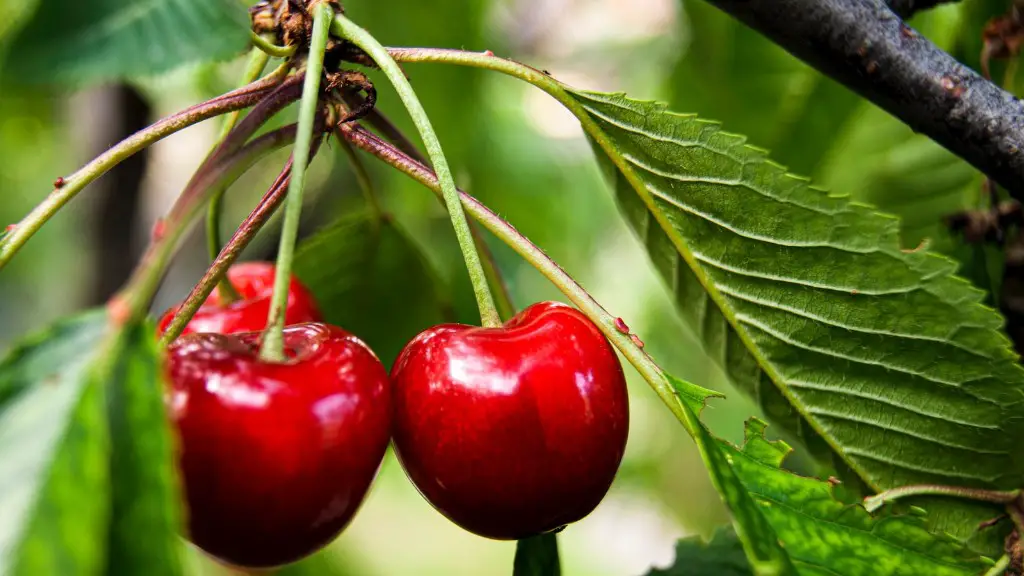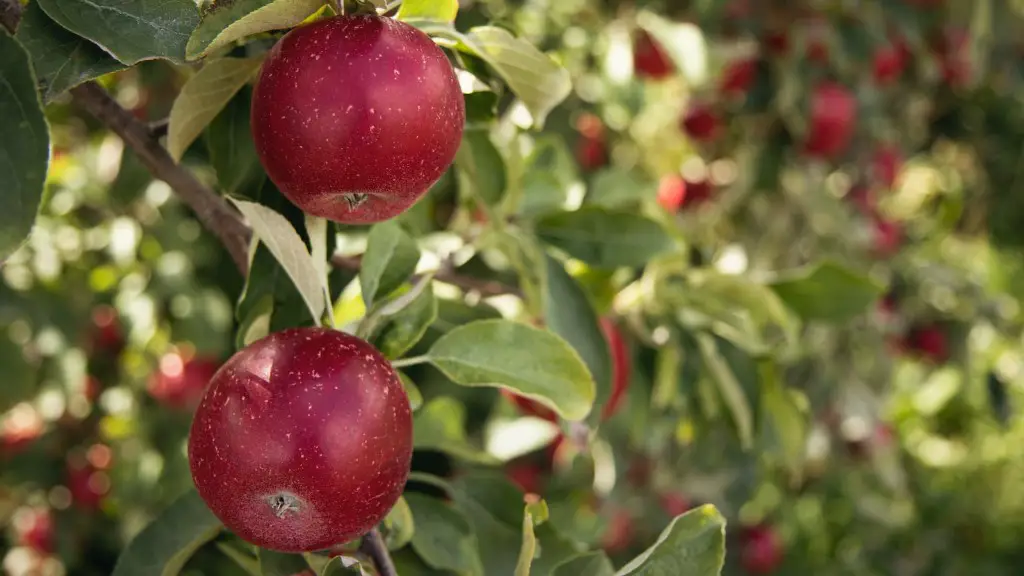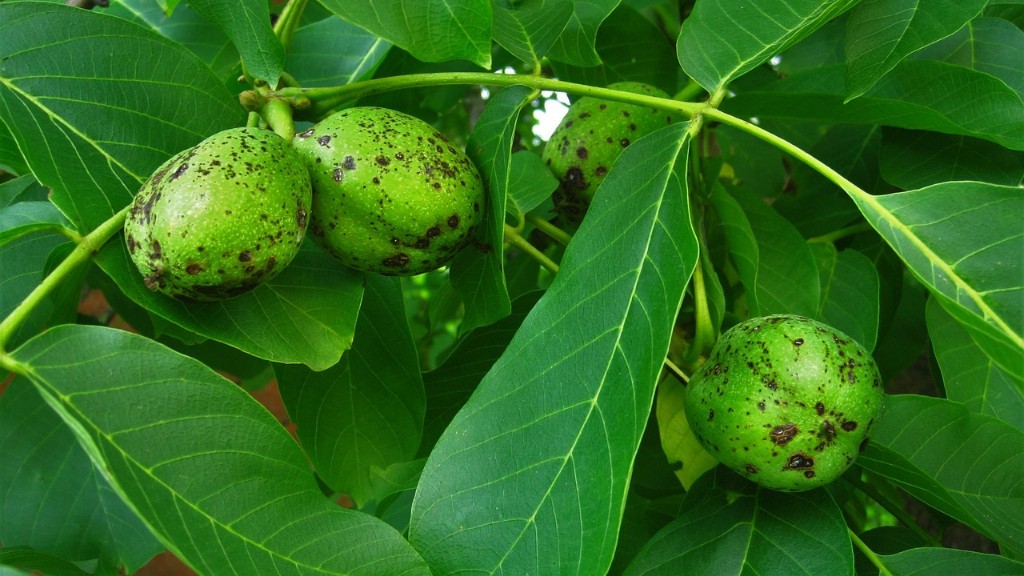Prepare the Tree for Spraying
The most important step in successfully spraying a cherry tree is to prepare the tree for spraying. Before beginning, make sure to read any instructions included with the specific type of pesticide or fungicide you’re using. Prepping the tree requires a variety of steps, including cutting away any dead or damaged branches, thinning the foliage, and removing any competing vegetation that may be in the vicinity. Additionally, prune the tree if it has not been done before, as this can improve the overall health of the tree and help with spray coverage.
Choose the Right Spraying Materials
Cherry trees require careful selection of spraying equipment in order to successfully distribute the pesticide. To start, it is important to determine the size of the tree and the tree’s foliage type. Trees with thin foliage may require a different approach than trees with thick foliage. Additionally, a high-volume, low-pressure (HVLP) sprayer, airless sprayer, or a backpack sprayer can all be used, depending on the size of the tree.
Apply the Pesticide or Fungicide
The purpose of spraying a cherry tree is to apply a pesticide or fungicide to the tree in order to prevent disease or pests from attacking the tree. When spraying, make sure to follow the directions on the label of the pesticide or fungicide being used. Most products require that a mixture of water and the product be applied to the tree until it is dripping off the foliage and branches.
Protect Non-Target Plants
In order to protect non-target plants, it is important to craft a buffer zone by using plastic or fabric sheets on the ground. These should be placed around the base of the tree and extend out in a 15 to 20 foot radius. This zone will ensure that any spray that accidentally lands on the ground will not reach any nearby plants. Additionally, it is important to avoid spraying on windy days in order to avoid any further spread of the pesticide or fungicide.
Check the Weather Forecast Prior to Spraying
The weather plays an important role in the success of spraying a cherry tree. Before beginning, it is important to check the forecast for the day and avoid spraying any product if temperatures reach 80 degrees Fahrenheit or more. Additionally, the chances for success are increased when the trees foliage is dry and temperatures are below 80 degrees.
Clean Up After Spraying
After completing spraying, it is important to thoroughly clean up any materials that may have been left out. Dispose of all unused pesticide or fungicide as well as used containers or plastic sheets in appropriate containers. Additionally, carefully wash any equipment that was used, as some residues may be harmful to humans or other plants. Finally, store any unused chemicals in a safe place away from children or animals.
Monitor After Spraying
In order to determine if the spraying was a success, it is important to keep monitoring the cherry tree. After spraying, it will likely take a few weeks or months to see the effects of the pesticide or fungicide. Most products will require multiple treatments in order for the tree to be properly protected from disease or pests. If after multiple treatments, you do not see any improvement, it may be necessary to contact a local arborist or tree expert in order to determine the cause of the issue.
Insect Pest Management
Insect pests can be damaging to cherry trees and can cause reduced yields, premature leaf drop and serious tree death. The most common insect pests of cherry trees are aphids, scale, mites, thrips and borers. In order to successfully mitigate these pests, it is important to identify the type of pest, the severity of the infestation, and the appropriate management technique. If a serious infestation is present, it is recommended to contact a specialist for assistance.
Fungal Disease Management
Fungal diseases can be detrimental to cherry trees and can negatively impact tree growth and damage the fruits and foliage. The most common fungal diseases found on cherry trees are powdery mildew, leaf spot and black knot. To manage these types of fungal diseases, it is important to diagnose the exact type of disease and then employ the appropriate preventive and control measures. These measures include using fungicides, providing proper tree care and pruning, and increasing air circulation to reduce the fungus build-up.
Fertilize Cherry Trees Properly
Cherry trees require proper fertilization in order to reach their full potential. Fertilizing should occur in the early spring with a slow-release fertilizer. Additionally, if the tree is exhibiting signs of nutrient deficiency, such as yellowing leaves or stunted growth, it may be necessary to apply additional nitrogen fertilizer. Additionally, if the trees are exhibiting signs of zinc deficiency, it may be necessary to apply a foliar spray of zinc.
Mulching and Pruning
In order to benefit the health of the cherry tree, two regular maintenance practices need to be performed; mulching and pruning. Mulching is a protective measure which helps to conserve moisture, reduce erosion and minimize weed growth. Pruning helps to promote healthy growth and is important to remove dead or damaged branches and promote better airflow. Proper pruning techniques should be followed as wrong cuts can cause serious damage to the cherry tree.
Disease and Pest Prevention
In order to avoid the effects of pests and disease, it is important to practice preventive measures. This includes keeping the cherry tree properly pruned and ensuring the tree is not stressed. Additionally, surrounding the base of the tree with a barrier of plastic or fabric sheets can help to protect the tree from any pests or disease in the soil. Finally, using pest repellents can also be an effective measure in controlling the spread of pests and disease.


